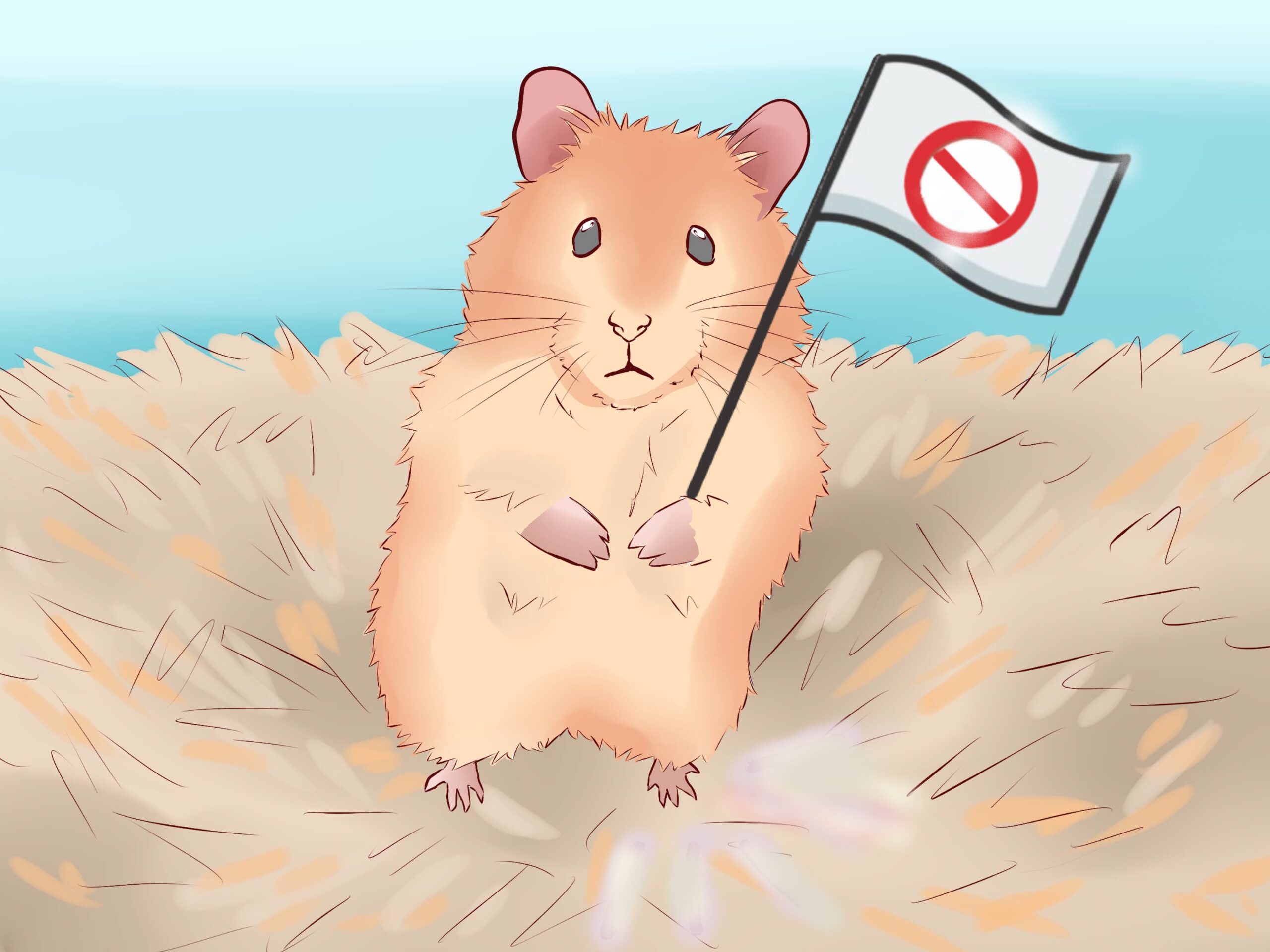• for a suitable environment (place to live)
• for a suitable diet
• to exhibit normal behaviour patterns
• to be housed with, or apart from, other animals (if applicable)
• to be protected from pain, injury, suffering and disease

HAMSTERS

HAMSTERS
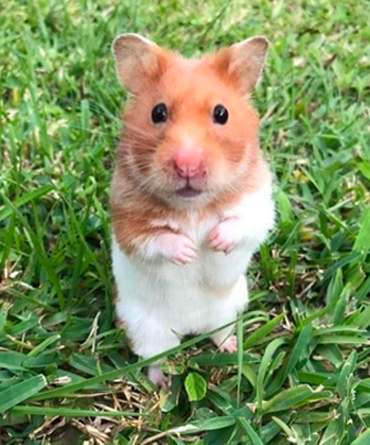
INTRODUCTION
Hamsters are protected by The Animal Welfare Act but sadly the basic needs of these creatures have been ignored by the pet industry for too many years. Furthermore, the products they sell often put the health and welfare of hamsters at risk.
Hamsterwelfare.com has been created to expose the injustices that hamsters are experiencing at the hands of the pet industry. The correct animal welfare advice exists but it is constantly ignored by the industry and when unsuitable products are sold to consumers, those pet owners may be unwittingly causing harm to their pet and breaking the law.
LEGISLATION
The Animal Welfare Act and the rights of hamsters are being ignored in many areas and the law needs to be applied.
The Animal Welfare Act 2006 makes owners and keepers responsible for ensuring that the welfare needs of their animals are met. These include the need:
OUR MAIN FOCUS
IS TO MAKE A DIFFERENCE IN THE FOLLOWING THREE AREAS:
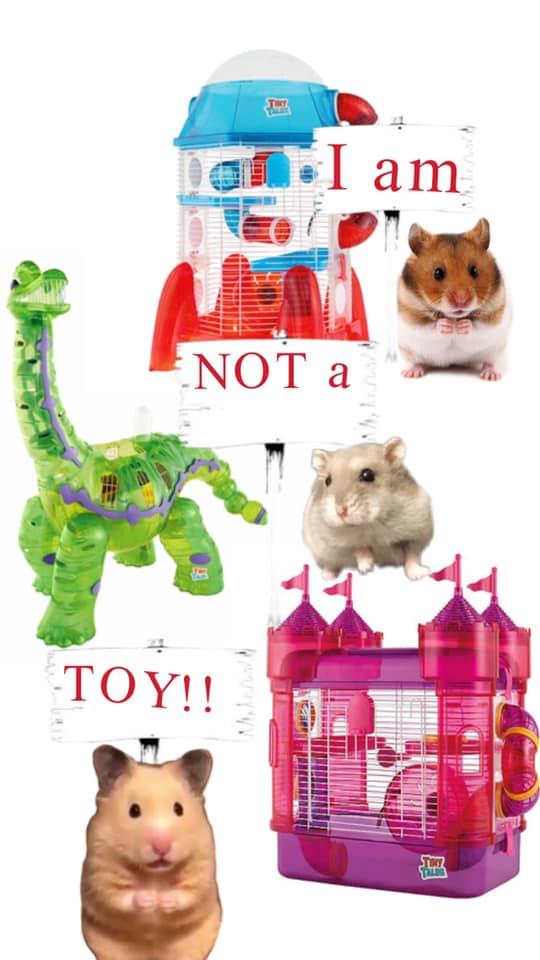
Cages
Pets shops rarely sell the correct minimum cage size which The Veterinary Association for Animal Welfare (TVT) recommends to be a minimum 100cm x 50cm x 50cm (L x W x H) for ALL species of hamsters including dwarf. At best a Pet shop may stock one type of cage that meets the bare minimum size but nowadays there are too many small cages which look more like toys and are targeted to appeal to children rather than adequately meeting the needs of the hamster that has to live inside them.
Our Welfare Concerns regarding cages are:
Small cages won’t fit an adequate sized wheel. Hamsters require the voluntary exercise of running on a wheel, in the wild they can run 9km in a night and their health requires the exercise, on Wikipedia it says “Tierärztliche Vereinigung für Tierschutz (TVT) recommends wheels should be at least 20cm (8``) for Dwarf Hamsters and at least 30cm (12``) for Syrian Hamsters, since smaller diameters lead to permanent spinal curvatures, especially in young animals. Wiki LinkIt is important that hamsters can exercise without causing permanent injury to themselves, it can lead to unnecessary pain and suffering and all cages that can’t accommodate an adequate sized wheel should be banned.
Very small hamster cages exist for Dwarf Hamsters and sadly owners of Syrian Hamsters will also use them, these small hamster cages shouldn't exist at all.
In an attempt to escape their miserable surroundings small cages encourage bar biting which can cause serious injury to a hamsters teeth.
Hamster Wheels
Research shows that small wheels cause spinal curvature injurys which can result in permanent unnecessary pain and suffering. The protection that hamsters are given under the Animal Welfare Act should be used to prevent owners from purchasing wheels that can cause pain and suffering. Research shows that Syrian hamsters require a wheel at least 30cm and dwarf hamsters 20cm.
To the frustration of many Hamster owners the wrong labelling of wheel size and suitability is common practice in the pet industry. Small wheels are often labelled as suitable for both Dwarf and Syrian Hamsters. For clarity the law should ban all wheels less than 6.5``(which is only suitable for a Roborovski hamster, the smallest breed of dwarf) any wheel size smaller than 6.5`` isn’t suitable for any hamster and shouldn't be sold.
Wire Rungs / Metal Mesh Wheels should be banned, they can cause bumblefoot and injury.
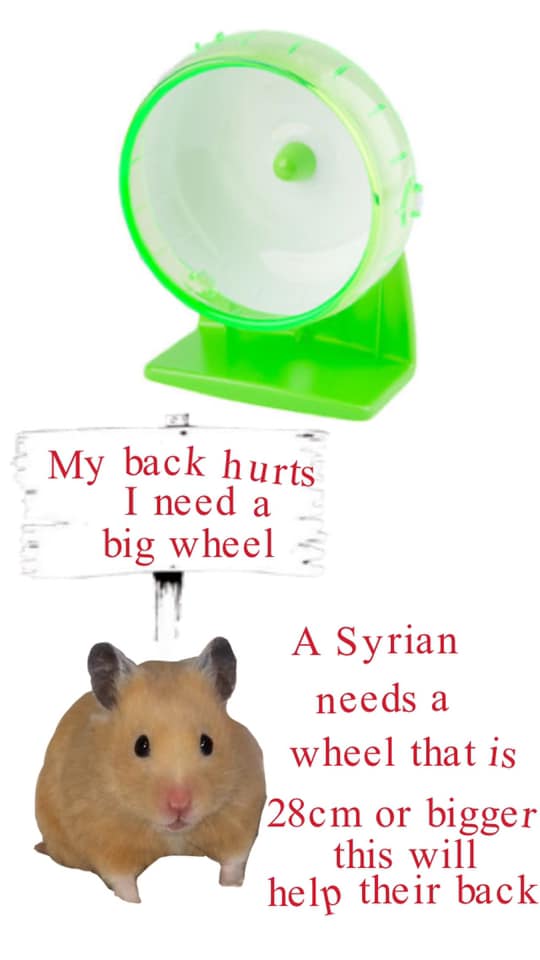
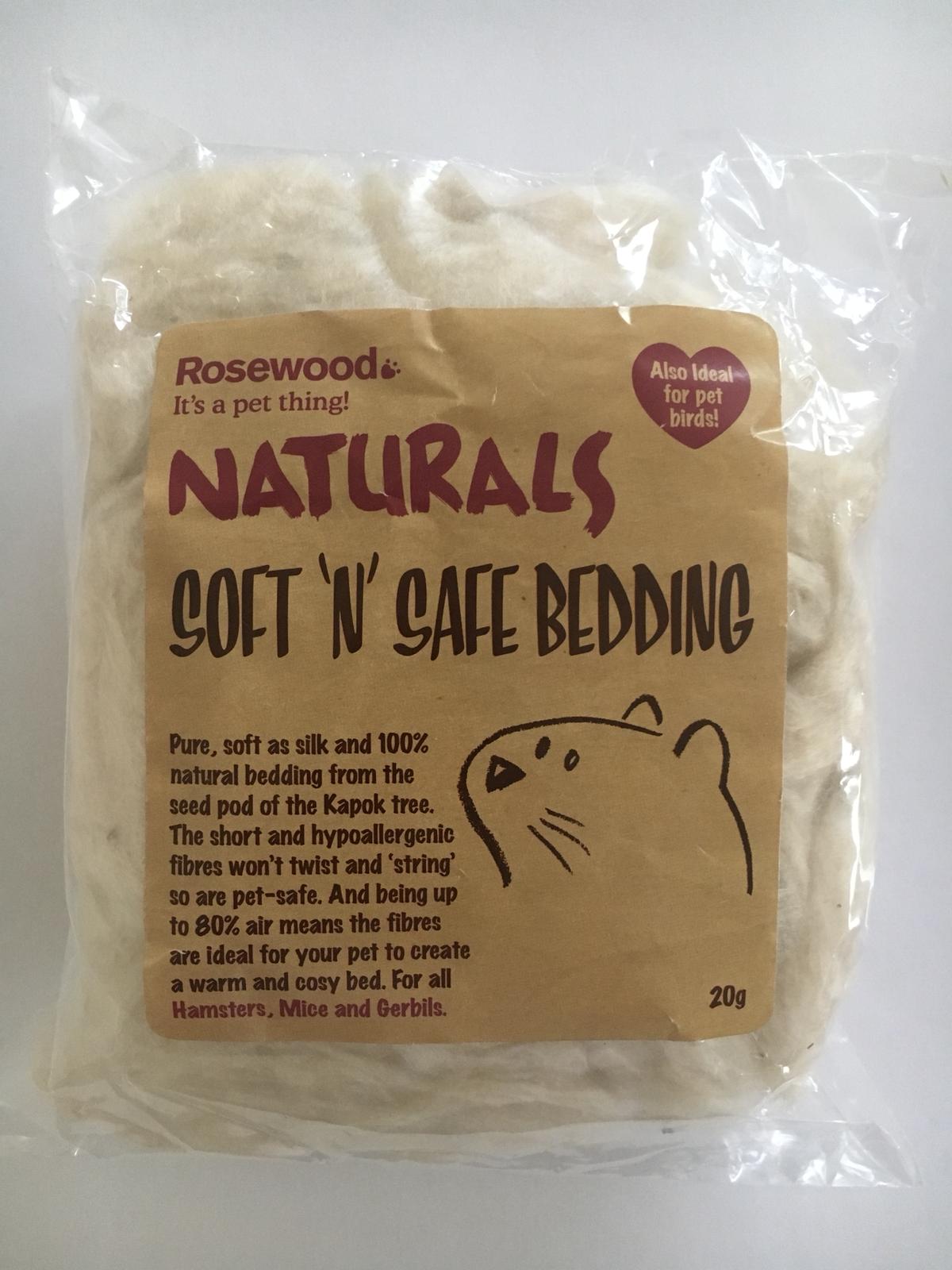
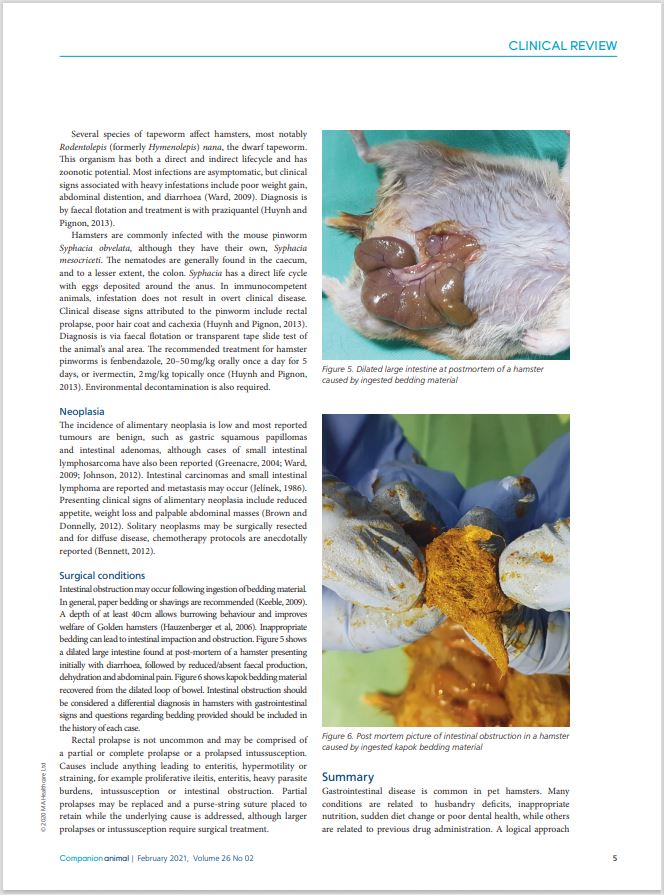
Fluffy Bedding
The RSPCA say “Don't give hamsters nesting materials that separate into thin strands, e.g. cotton wool or similar 'fluffy' bedding products. They pose a serious risk to their health and welfare, due to the possibility of entanglement or ingestion.
This advice has been ignored for many years and some manufacturers even go as far as saying that their product is safe! There are many testimonials from the public saying that fluffy bedding has caused injury or death to their pet.
One theory is that the small fibres stick to the inside of a hamsters cheeks and then becomes ingested. Of course the ingestion issue is impossible to see with the naked eye but new groundbreaking evidence has come to surface.
Poppy a Syrian hamster died at the vets whilst waiting for an operation to free a suspected blockage. Poppy only did one faeces in 10 days and it seemed like constipation. At the post mortem they found a total impaction of fibre and a ruptured colon, poor Poppy must died in agony. The fibre was collected for forensic testing and it was confirmed to be the fluffy bedding the owner used, Rosewood Soft ‘n’ Safe.
The combination of this evidence and advice from the most reputable sources such as The RSPCA, The Blue Cross and Royal Veterinary College. Many testimonials over the years and public outcry involving a Change.org petition, has persuaded many major retailers to stop putting animals in harms way.
The letter and advice on our Fluffy Bedding Page has educated many retailers and they have taken the decision to stop selling fluffy bedding, sadly some retailers still won’t listen to to the animal welfare advice. Your welcome to download this letter and evidence and forward it on to any retailer that you see selling fluffing bedding.
The ground breaking post mortem evidence has also been published in a Peer reviewed Journal written by Vicki Baldry of Royal Veterinary college as can be seen here.(insert PDF Link)
BLOG
OUR NEWS

May 9
Cage Size Petition Gets Over 10k Signatures
You may remember back in 2023, Alex also known as furbabyfamilyOG on tiktok launched a petition to get the government to ban the sale of cages that are too small for animals. You can see the original blog that we did with Alex when he first started his mission here. Unfortunately, the petition only […]
READ MORE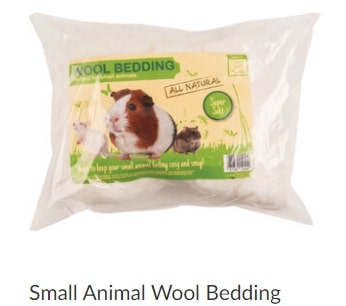
March 26
The Range Sell Cotton Bedding For Hamsters But Their Care Guide Says Avoid Cotton Bedding
The Range’s “Guide to Owning a Hamster” published on their website says ” Avoid cotton wool of ‘fluffy’ bedding, materials that can separate into thin strands, or non-specialist material, as these can harm your hamster.” But at the same time as providing this advice they sell their own brand of cotton wool bedding that they […]
READ MORE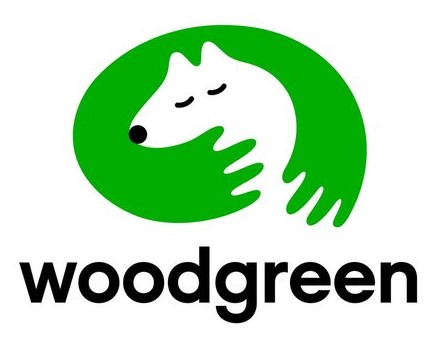
January 2
Woodgreen Recommend 100cm x 50cm Hamster Cage Size
Woodgreen recommends 100cm x 50cm Minimum Cage Size for All Species of hamsters. For hamster guidance, 3 out of the 4 major animal charities in The UK recommend this minimum, with both Blue Cross and PDSA also saying that a hamster cage should be at least 100cm x 50cm for All species of hamsters. […]
READ MORE© Copyright 2022 HamsterWelfare.com

